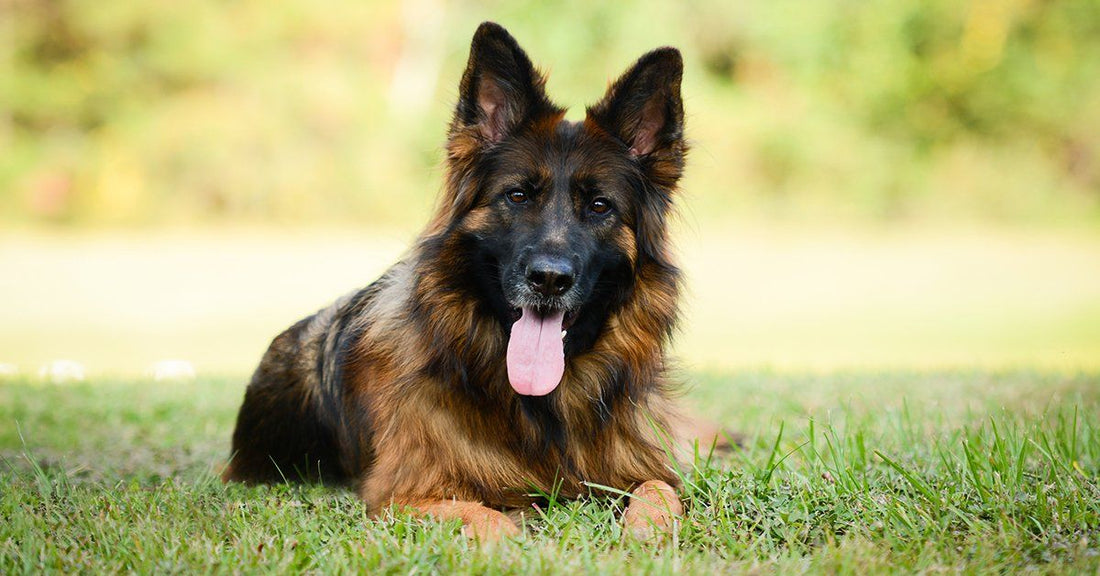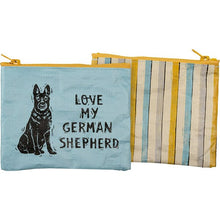How To Train Your Dog To Stay In Your Yard

Choosing to allow your dog to hang out in an unfenced yard is a very personal and important decision. There are many benefits of training this and also many more risks than keeping your dog in a fenced yard.
Some of the benefits include being able to spend time in the unfenced yard with your dog, being able to load your dog into the car off leash, and knowing that if your dog gets out of the front door or the backdoor, that they will stay in the yard.
Some drawbacks of this include the risk that your dog could bolt out of the yard and be injured, other animals can enter your yard at any time, you have to watch your dog at all times, there may be some ordinances against it, and strangers can approach or lure your dog out of the yard.
No matter what side of the fence you’re on, there is a lot of value to training your dog to stay in the yard.
Training Begins With Basic Obedience
Before training your dog to stay in your yard, your dog must have basic obedience skills, have good recall, and be willing to listen to you. If your dog hasn’t mastered those skills you must teach those before letting your dog loose.
Training your dog to stay in the yard is a form of teaching boundaries. It is the same foundational training used to train dogs not to go in certain rooms or to stay off of certain furniture. Just like all boundary training, it requires lots of repetition. Unlike other boundary training, there is more risk involved in teaching your dog to stay in the yard and it takes much more time to train.
Identify The Boundary Line
To begin, first you need to decide where the invisible boundary line for your dog will be. Once you decide, if there is not a natural barrier (grass, sidewalk, etc.) you can purchase small flags or rope off a low area to clearly mark the boundary line. You can also use both, a natural barrier and a rope or flags.
Unless you have a very small yard, you will teach them to stay in one area at a time. For example, you may want to train one side of the driveway before training the other side. Or you may decide to only have them in one area or side of the yard. Or, if you have a huge yard, choose which area you will train them to stay in first. Using flags or a roped off area is very helpful in these cases.

Introduce Your Dog To The Boundary Line
First, introduce your dog to the boundary line. You can do this by walking your leashed dog around a small section of the boundary line, without crossing it. Drop treats along the inside of the boundary line and praise or mark the behavior when they find the treat and stay inside the line.
In the same session, loose leash walk your dog giving them more freedom inside the correlating section of your yard. Toss treats for them to find and let them move around the area unencumbered by their leash. Keep working on this until your dog seems to understand they are supposed to stay in the yard and they don’t try to pull you out.

Reinforcing The Boundary Line
For the next part of the training, you’ll need a tie out for your dog. This will allow you to let go of the leash while still keeping your dog safe. When tying down your dog, be sure they are secure and can’t reach the street.
With the dog tied, walk to the boundary line and allow your pup to follow you. Toss treats on the ground just inside the boundary line and mark or praise their finding their treat without crossing the line.
Allow the dog to freely move about the inside of the boundary and toss treats and mark or praise them for moving around and finding them. To avoid confusion, don’t reward the dog for sitting or lying down in the yard.
When the dog seems content to stay inside the boundary line with you, you can begin to walk on the outside edge of the boundary line without letting your dog follow you. Toss treats into the yard and praise your dog for finding them and staying behind the line and not following you. If they follow you, send them back to the yard and give them a treat for doing so.
Make Staying Inside the Boundary More Challenging
This training takes time and repetition so after your dog has mastered staying in the yard with you walking just outside the boundary, start moving farther away, a few feet at a time, from the boundary line.
With your dog tied, walk up and down the boundary line. When the dog doesn’t cross, mark and praise their behavior and give them a treat. Slowly allow more distance to build between you and the dog. If the pup does cross over the boundary, give them a cue to go back over the boundary and back into the yard. Once the dog is back in the yard, mark with praise and give a treat.
If your dog continues to cross the boundary line, send them back into the yard but wait before giving a treat. In other words, make them watch you for cues so you reinforce to them that they only get treats while behind the boundary. Make it clear that they do not get treats for stepping out of the boundary and then returning to the yard.
Reinforce the Boundary Line
After your dog is doing well staying behind the boundary with you moving away and walking back and forth, it’s time to reinforce the training. With your dog still tied down, start by moving farther way, moving rapidly about in the yard then outside the boundary line, or jogging back and forth in the yard then moving outside the line.
Be sure your dog stays behind the line and praise them and toss them a treat for doing so. If your dog follows you outside the boundary line, simply send the pup back to the yard and try again. Only next time, slow down and pause before jogging out of the boundary line and leave a treat to stop the dog from following you out. When the dog stays behind the line, give huge praise and treats. Keep practicing this until the dog stays reliably behind the line when you pass over it.
Testing the Boundaries
The steps above may take days or weeks to teach, depending on the dog. There is no need to rush this training. Before attempting to take your dog off leash, you’ll want to test the boundaries.
You’ll test the boundaries with the dog still tied down on a long line so they are not in any danger. Make staying behind the boundary more challenging by asking a friend your dog knows to come over and walk in and out of the line, asking a stranger to walk by your yard, tossing a toy over the boundary, having someone walk their dog by your yard, etc.
If in your dog’s excitement they cross over the line, send them back to the yard, then pause and reward. Keep practicing until your dog learns that they have to stay in the yard all the time. Once they do, it’s then time to test them off leash but only if you’re comfortable and they’ve passed lots of tests in different situations.
Teaching your pup to stay in the yard is important to reinforce and not slack on. It’s never okay for your dog to leave the yard without you, no matter what is going on and if they do, you need to send them back 100% of the time to make the rules clear.
There are also tools that can be used to help your dog learn to stay inside the yard such as an electronic fence or the correct use of an ecollar. Both of those methods have a learning curve and their success depends upon the dog and the willingness of the owner to learn how to safely use them. In training, using a clicker as well as praise is also a great tool.

Different breeds and personalities may also require different training. Sighthounds, such as grey hounds, whippets, or Italian greyhounds are not good candidates for being off leash in the yard since they are fast and born to chase animals.
Dogs with high prey drive or dogs bred to hunt, such as shepherds, retrievers, spaniels, terriers, and pointers need lots of training before they can be trusted to stay in the yard and should have perfect recall before being trusted to run loose.
We hope these tips help you. Please share with your family and friends.
























